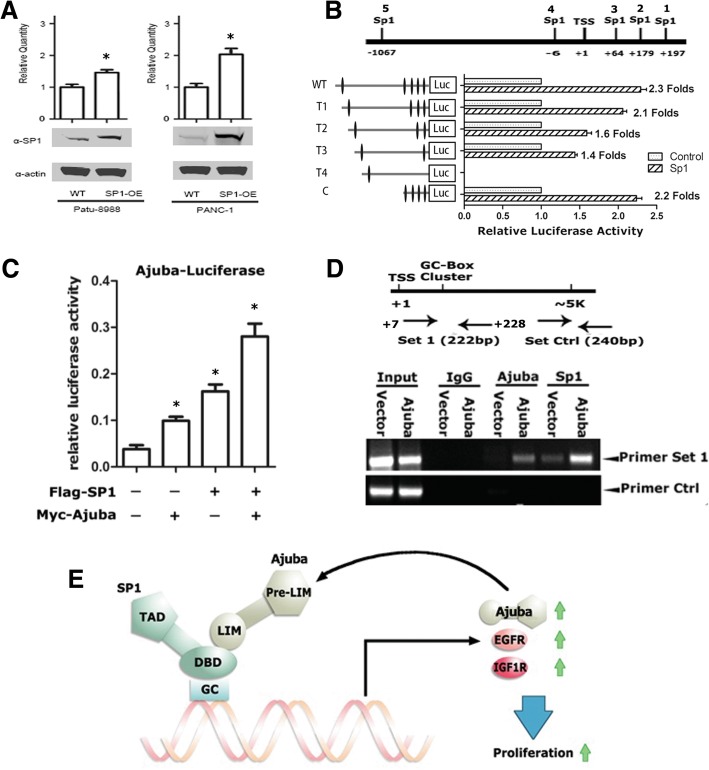Fig. 7.
Ajuba promoter contains tandem SP1 responsive elements and itself is a SP1 target gene. a SP1 induced Ajuba transcription in Patu8988 and PanC1 cells. The cells were the same as that used in Fig. 5. mRNA level of Ajuba was examined using qRT-PCR. b SP1 induces Ajuba promoter activity in PanC1 cells. The Ajuba promoter region contains five predicted SP1 responsive elements, in which the first four binding sites are close to the TSS and form a SP1 binding site cluster. Serial Ajuba promoter deletions were cloned into pGL3 vector and the reporter assays were performed in PanC1 cells. T1-Luc: Deletion of the 1st SP1 binding site. T2-Luc: Deletion of the 1st and 2nd SP1 binding sites. T3-Luc: Deletion of the 1st,2nd and 3rd SP1 binding sites. T4-Luc: Only retain the binding site of the 5th SP1 binding sites. C-Luc: Deletion of the 5th SP1 binding site. c Ajuba and SP1 maximally induced full length Ajuba-promoter Luc activity. d ChIP assays showed binding activity of Ajuba and SP1 to Ajuba promoter in PanC1 cells, and overexpression of Ajuba enhanced SP1 binding. ChIP assays were performed using SP1 and Ajuba antibodies, and the co-eluted DNA fragments were analyzed by using PCR. e Model for Ajuba in SP1 mediated gene transactivation. Ajuba functions as a co-activator of SP1 and itself is a target gene of SP1. Thus, Ajuba/SP1 complex could form a feed forward loop to drive the gene expression and promote cell proliferation

